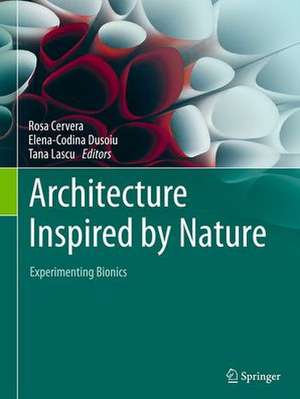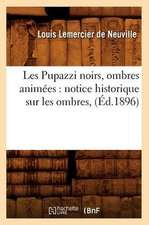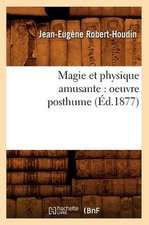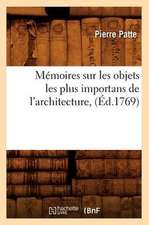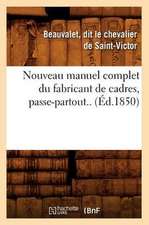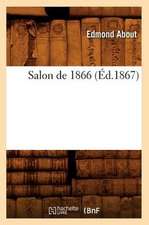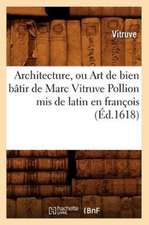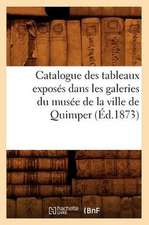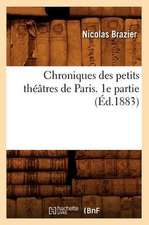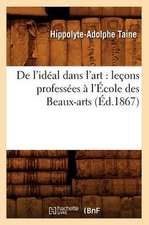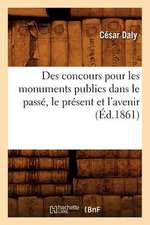Architecture Inspired by Nature: Experimenting Bionics
Editat de María Rosa Cervera Sardá, Elena-Codina Dușoiu, Tana Nicoleta Lascuen Limba Engleză Hardback – 25 aug 2023
Preț: 959.19 lei
Preț vechi: 1169.74 lei
-18% Nou
Puncte Express: 1439
Preț estimativ în valută:
183.60€ • 199.50$ • 154.32£
183.60€ • 199.50$ • 154.32£
Carte disponibilă
Livrare economică 31 martie-14 aprilie
Preluare comenzi: 021 569.72.76
Specificații
ISBN-13: 9783031331435
ISBN-10: 3031331435
Pagini: 276
Ilustrații: XVI, 276 p. 293 illus., 243 illus. in color.
Dimensiuni: 210 x 279 mm
Greutate: 0.84 kg
Ediția:1st ed. 2023
Editura: Springer Nature Switzerland
Colecția Springer
Locul publicării:Cham, Switzerland
ISBN-10: 3031331435
Pagini: 276
Ilustrații: XVI, 276 p. 293 illus., 243 illus. in color.
Dimensiuni: 210 x 279 mm
Greutate: 0.84 kg
Ediția:1st ed. 2023
Editura: Springer Nature Switzerland
Colecția Springer
Locul publicării:Cham, Switzerland
Cuprins
PART 1: Learning from Natural Structures: the Basis for a Bionic Approach.- Chapter 1: Bio-Inspired Light Structural Systems: Micro-components of Nature.- Chapter 2: Bionics and the Future of Tall Building Design.- Chapter 3: FREI OTTO: LIGHT STRUCTURES INSPIRED BY NATURE EXPERIMENTS WITH PHYSICAL SELF-FORMING PROCESSES: SOAP SOLUTIONS, VISCOUS FLUIDS, BRANCHING STRUCTURES AND FUNICULAR FORMS.- Chapter 4: Categories of Natural Principles and their Adaptation to Bionic Design.- Chapter 5: The Bionic Paradigm of Light in Architecture and Design. From the Vision of Animals to Architectural Conception.- Part 2: Establishing the Tools: Parametric and Biodigital Architectural Design.- Chapter 6: Generative Bio-digital Architecture & Design.- Chapter 7: Bionic Architecture and the Cyborg Culture.- Chapter 8: The Potential of the Architectural Forms Derived from the Conoid.- Chapter 9: The Challenge of Next Generation Machine Learning Algorithms for Architecture Design and Living Environment.- Part 3: Studying Scales in Territory: Bionics and Landscape.- Chapter 10: Landscape as Process - A Crossdisciplinary Integrated Approach.- Chapter 11: Disruptive Biotop: Interstitial Space of Encounter between Architecture and the City.- Chapter 12: Life on Earth. Reflections in Moments of Crisis.- Chapter 13: Evolutionary Biophilic Concerns in the Landscape and the Relationship with the Future Society of Consciousness.- Chapter 14: Nature – a Structural Element of Future Human Settlements? Biophilic City Approaches - Today's Priority: Transition from Design to Urban Planning and Policy-making.- Chapter 15: Bionic Criteria for Sustainable Labelling of Buildings.- Part 4: Researching on Materials: from Macro to Nano.- Chapter 16: Micro-algae: the Industry of Future.- Chapter 17: Cultivating Micro-Algae in Architecture: Towards a Zero Carbon print .- Chapter 18: Nano-modified materials: Nano-Components for New Constructions and Technologies.- Chapter 19: PET Residual Recycled Concrete and Bacteria Encapsulation Method for Achieving Post-Fire Self-Healing Concrete.- Chapter 20: Adaptive and Bioinspired Materials: Cement-based materials with self-modulating and self-sensing properties.- Chapter 21: Practising Bionics: Experimental workshops.
Notă biografică
Maria Rosa Cervera Sardá is Ph D. architect, Professor and former Dean of the School of Architecture of the University of Alcalá and Current director of the Master's Degree in Advanced Architecture and City Projects. She is the author of writings and books on architecture, among which we highlight: "Bionics, Biomimetics and Architecture" (2019); "Space and Time in Architectural Composition" (2018); Recycling Mumbai. Re-imagining the slum” (2012). “Madrid, Recycled City” (2011), “Iron in 19th century Madrid architecture” (2006). A regular speaker in professional and academic circles, she has given lectures in Spain, China, India, USA, Bolivia, Peru, El Salvador, Venezuela, Romania, Italy, etc. As an architect, Rosa Cervera has received several awards -the "Antonio Maura" award, the COAM award, the "Transfer of Knowledge" award- and has won several international architecture competitions. Rosa Cervera is a pioneer in the research of Bionics, Biomimetics and the application of biological structures to innovative and efficient architecture and urban design. A direct result of these studies is the Self-Sustainable Vertical Garden City, Bionic Tower. Elena-Codina Duşoiu is a Ph.D. architect and professor within the Ion Mincu University of Architecture and Urbanism from Bucharest, Romania. Her main fields of research are: rehabilitation and conversion of buildings (published books: The Dynamics of the Sacred Space. The Influence of Function, 3 Breweries and their Destiny, Ion Mincu Publishing House, 2009), vernacular architecture and ecology (organizer of 12 editions of Spanish-Romanian workshops on vernacular architecture 2006-2018), design and bionics (research studies realized within the IMUAU and the Alcalá University, 2021-22). She received various research grants and published about 100 scientific articles and 8 authored and co-authored books in the mentioned research fields. Outstanding activity as Visiting Professor in Spain, Italy, Greece, Czech Republic, Liechtenstein, Argentina etc. Several national and international prizes and nominations in architectural research and architectural design, owner of a personal architecture studio since 2003.
Tana-Nicoleta Lascu is a Lecturer Ph.D. architect at the Faculty of Architecture,Ion Mincu” University of Architecture and Urbanism, Bucharest, Romania. She has been involved in several restoration projects in Romania, France, and Italy, thereafter developping more than 100 projects during seven years activity at Cornelis de Jong Architektenburo bna, Middenbeemster, Noord-Holland, most significant in Urk, De Rijp, Marken and Beemster, polder inscribed on UNESCO World Heritage List, at the initiative of architect Cornelis de Jong. She was visiting professor at University of Liège (2014), University of Architecture in Venice – IUAV, and University of Alcalá, within Giner de los Rios program (2021). Since 2012, she represents IMUAU within The Network of Universities for Studies and Education according the European Landscape Convention – UNISCAPE. Her doctoral thesis „Landscape as an Integrated Concept in the Sustainable Development”, concluded in 2011, as well as the studies and research projects came as result of her constant interest for a transdisciplinary-integrated approach.
Tana-Nicoleta Lascu is a Lecturer Ph.D. architect at the Faculty of Architecture,Ion Mincu” University of Architecture and Urbanism, Bucharest, Romania. She has been involved in several restoration projects in Romania, France, and Italy, thereafter developping more than 100 projects during seven years activity at Cornelis de Jong Architektenburo bna, Middenbeemster, Noord-Holland, most significant in Urk, De Rijp, Marken and Beemster, polder inscribed on UNESCO World Heritage List, at the initiative of architect Cornelis de Jong. She was visiting professor at University of Liège (2014), University of Architecture in Venice – IUAV, and University of Alcalá, within Giner de los Rios program (2021). Since 2012, she represents IMUAU within The Network of Universities for Studies and Education according the European Landscape Convention – UNISCAPE. Her doctoral thesis „Landscape as an Integrated Concept in the Sustainable Development”, concluded in 2011, as well as the studies and research projects came as result of her constant interest for a transdisciplinary-integrated approach.
Textul de pe ultima copertă
The book brings together the research completed during 10 editions of International Seminars of Bionics, organized by the School of Architecture of the University of Alcalá de Henares, Madrid, several of them in partnership with the “Ion Mincu” University of Architecture and Urbanism, Bucharest, carried out in Spain and in Romania. The articles here consider advanced bionic design principles, implementing them to an impressive variety of application fields, including, but not limited to, urban planning and landscape, public space, architecture and building structures, design and detailing, application of natural dynamic processes, bio-digital architecture, innovative materials based on living organisms (micro-algae), and nano-modified materials. A particular focus is given to light and perception of light. To illustrate the principles developed, this contributed volume includes descriptions and full-color images of the experimental projects created during the workshops held in the framework of these ISB meetings: Learning from Nature, Integrating Bionics (2009); Adaptability, Efficiency and Biostructures (2010); Bionics and Innovation (2011); Forms and Structures Inspired by Nature (2016, 2017); Furniture Inspired by Natural Models (2018); Relation between Structure and Envelope: Light Structures (2019); Light, from Nature to Architecture. Structures Inspired in Nature (2020); Light in Architecture and Design: A Bionic Perspective (2021); Sustainable Thinking and Bionics (2022).
Caracteristici
Investigates the possibilities of natural structures and forms in in architecture at a variety of scales
Discusses the incorporation of living organisms such as plants and algae in sustainable architecture
Offers full-color examples of experimental projects created in bionic design workshops
Discusses the incorporation of living organisms such as plants and algae in sustainable architecture
Offers full-color examples of experimental projects created in bionic design workshops
